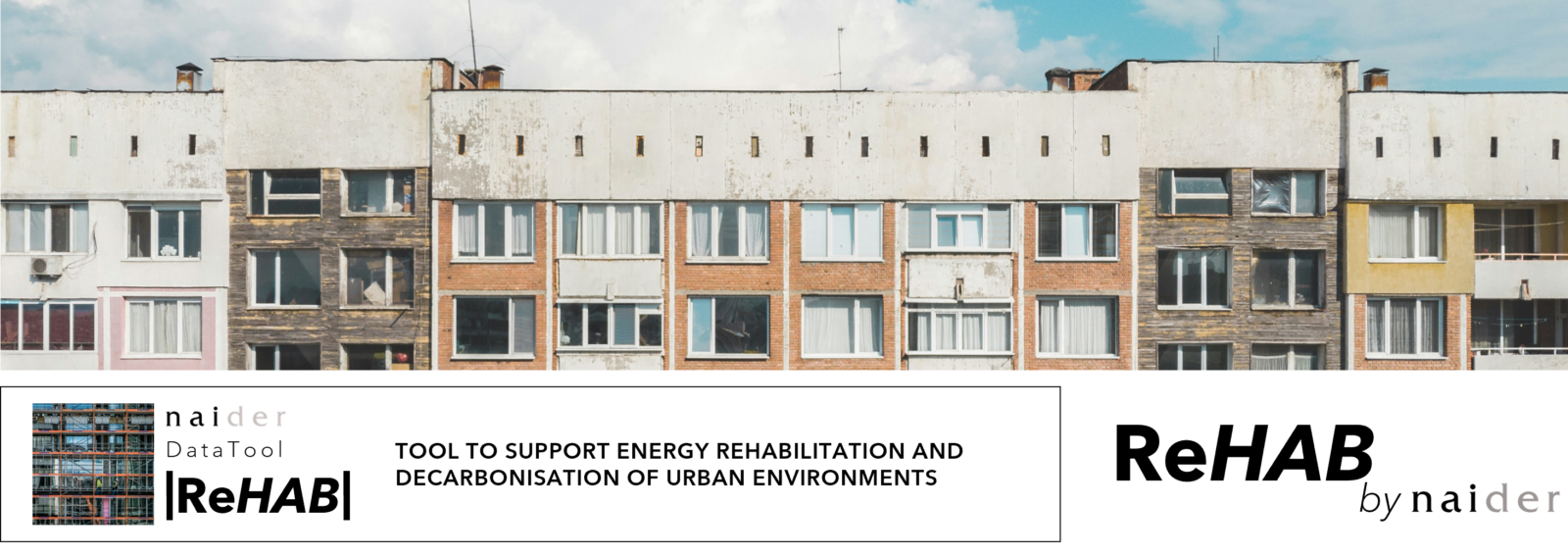
what it is
TOOL TO SUPPORT ENERGY REHABILITATION AND DECARBONISATION OF URBAN ENVIRONMENTS
REHAB is a support tool for decision making related to the energy rehabilitation of buildings and the improvement of energy efficiency. On the one hand, it provides information on the current energy status of the building stock in each municipality, quantifying consumption and emissions. On the other hand, it helps to identify the buildings in which it is a priority to intervene, as well as to choose the measures (passive and active) and the degree of refurbishment to be implemented. Finally, it makes it possible to estimate the costs by quantifying both the initial investment and the annual economic savings obtained and to know the socio-economic impact produced at the level of municipality, neighbourhood or building. In addition to these functionalities, REHAB offers an improved visualisation experience, allowing 3D maps to be explored and buildings to be selected intuitively.
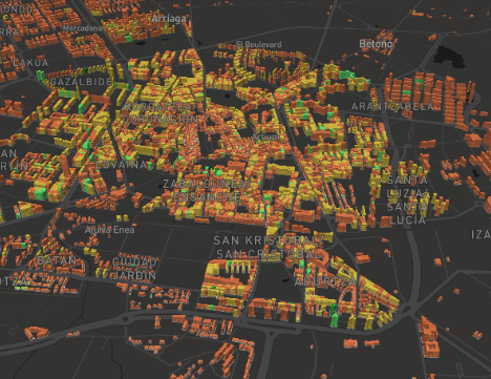
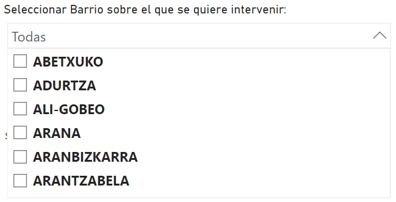
goals
KNOWING, ASSESING, REHABILITATING, DECARBONISING
- To know the current energy status of the building stock in each municipality, as well as its possibilities and opportunities for refurbishment and energy efficiency improvement.
- Assess the costs and impacts of the various possibilities of action in all or parts of each municipality.
- To assist in decision-making related to energy efficiency improvement processes, intervening first in the areas that show the worst performance.
- Raise awareness and accompany citizens throughout the process, also allowing them to know in a clear and concise way the current regulations, the existing financial instruments and other cross-cutting aspects.
functionalities
ENERGY EFFICIENCY SCENARIOS, DEGREE OF INTERVENTION, REQUIRED INVESTMENT AND ANNUAL ECONOMIC SAVINGS
- The tool is prepared to display data at city, neighbourhood or building level. The various scenarios can be presented (1) by specific areas or buildings on which action is to be taken; and/or (2) by current energy certification (for example: all buildings with a G rating in an area).
- Regarding the typology of actions to be carried out on buildings, it is possible to select the degree of intervention sought*: comprehensive refurbishment, passive measures on the entire building envelope, active measures, interventions on façades, roofs, openings, etc.
- Once the desired inputs have been selected, the tool shows the total investment of the action, the annual economic savings, the number of dwellings involved, the percentage reduction in annual consumption, the consumption before and after the refurbishment, the emissions before and after the refurbishment, and the energy rating before and after the refurbishment.
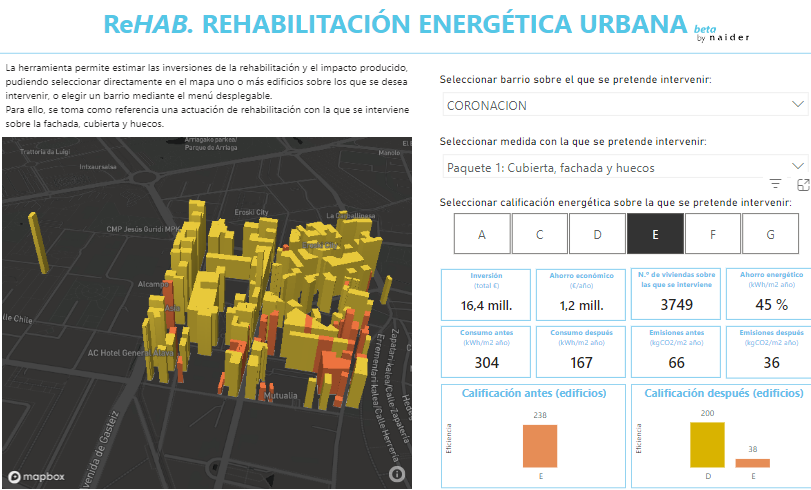
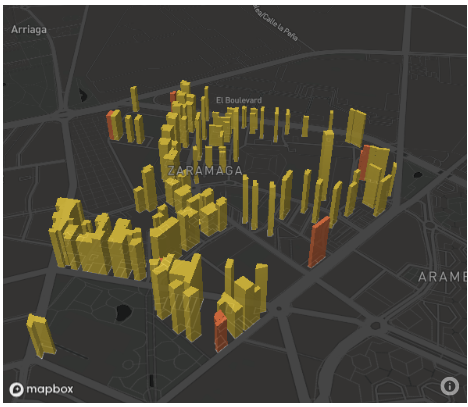
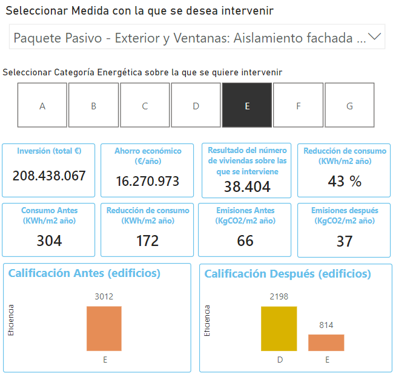
beneficiary entities
LOCAL AUTHORITIES AND PUBLIC HOUSING, URBANISM AND REHABILITATION COMPANIES
Local authorities and public housing, urban planning and rehabilitation companies that want to know and improve the energy efficiency of their building stock can benefit from this tool. REHAB provides a comprehensive picture of the energy status of buildings in the municipality, facilitating the identification of priority areas for intervention and their degree. It also facilitates informed decision making on retrofit investments, considering costs and benefits at the local level.
In its approach to the community, it can be conceived as a public resource open to citizens. It can be a valuable tool for communities of homeowners and neighbours, offering the possibility to explore energy retrofitting options in their homes and buildings.
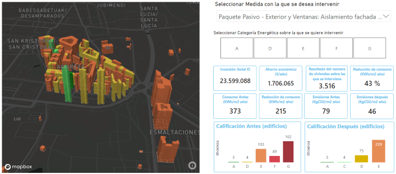

possibilities
ENERGY PROFILE, ASSESSMENT, PLANNING, MONITORING, REPORTING
The tool offers a variety of possibilities based on the results obtained:
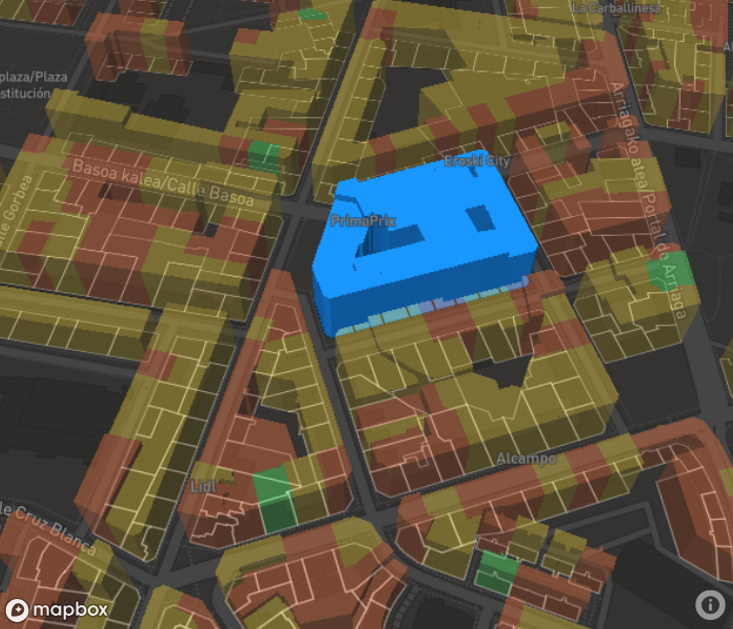
interaction
REHAB TOOL IN DEMO VERSION
*Note for the beta example: for the estimation of investments and the impact produced, a typical refurbishment action (passive package) is taken as a reference, with which the entire envelope (façade, roof and openings) is intervened.
Main picture: Georgi Kalaydzhiev





